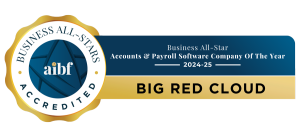On-page SEO practices
On-page SEO practices are really important considerations when looking after/building your website. On-Page SEO practices, if carried out as per the following guidelines, will positively affect your website’s search engine ranking.
There is quite a list of SEO practices that you should be aware of but we’ve identified 7 key ones and we’ve published 4 in today’s blog – ‘On-page SEO practices to boost your website’s ranking – part 1’.
Keywords
Keywords are the words and phrases that people search to get to your site. They are critical to the success of search engine optimisation or SEO for your site.
There are three key keyword tasks:
1. Carry out in-depth long -tail keyword research before you set about optimising your website.
2. Then use these long-tail keywords or phrases in your website pages to enhance your chances of being listed for those phrases.
3. Always include your keywords in the first 150 words of content on each page. You’ll find that Yoast, for example, will ask you to include your keyword in the very first sentence.
Title tags
Title tags define the title of a web page. It tells the search engines what your page is about so it’s importance can’t be stressed enough.
There are three key title tag tasks:
1. Title tags should be under 55 characters
2. Remember long-tail keywords from above – use them in the title tag.
3. Use the following order so that search engines can best rank your page – Primary keyword, Secondary keyword, Website name.
Meta descriptions
Meta descriptions provide potential customers with a snippet of information of what they can expect to find by clicking on your particular landing page. The meta description is recommended to have no more than 160 characters and despite being related by Google as to a major non ranking factor, meta descriptions are an important consideration when publishing any page.
There are three key meta description tasks:
1. Meta description is your opportunity to sell the sizzle. Attract visitors with good, well written copy.
2. no more than 160 characters and try to stay above 150.
3. Remember those long tail key words? Use them here too.
URLs
First off, URL stands for Uniform Resource Locator, and is used to specify addresses on the World Wide Web. This is important as URLs are important to Google, Bing, Yahoo and other search engines – they help the search engines and visitors to better navigate your website. They act as signposts, (hopefully) telling search engines and visitors what the page is about.
There are three key URL tasks:
1.Like your meta descriptions, spend some time thinking about the title of the URL. Instead of www.bigredcloud.com//ac-24567 be descriptive and go for something like www.bigredcloud.com//account-ability/introduction-free-training-course/
2. Again – remember keywords. Use them. In our example above, ‘introduction free training course’, keywords about Account Ability, our new basics of accounting training course.
3. Follow the accepted protocol for producing a URL – protocol://hostname/other_information: https://bigredcloud.com/account-ability/
If you can see the pattern emerging above, it’s about taking time to follow a set of steps that are guaranteed to help your website to perform better. Yes, there is a technical element to the back-end of your website but at least, you are getting a grounding in the key aspects of maintaining a website that meets the critical for Google, Bing, Yahoo and most importantly, your potential customers.
Check back in tomorrow for ‘On-page SEO practices to boost your website’s ranking – part 2’.




